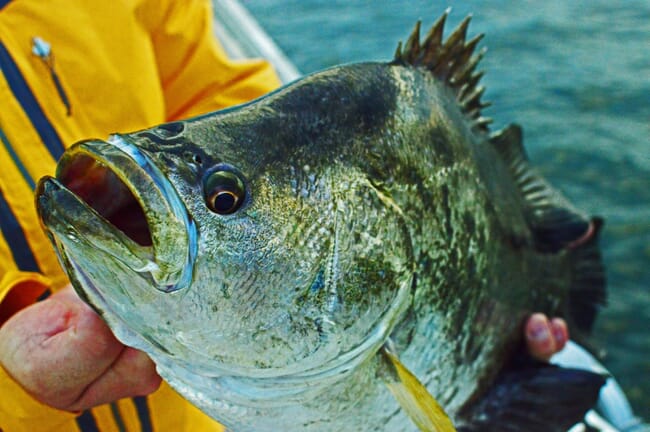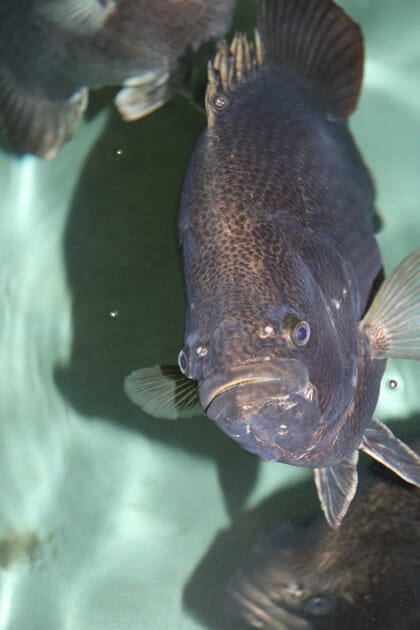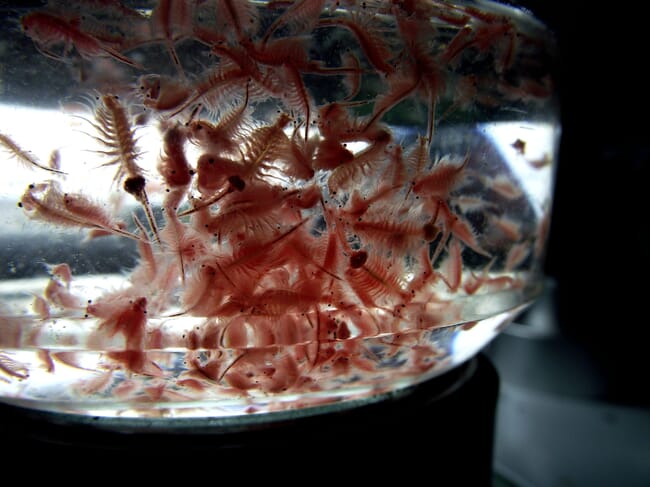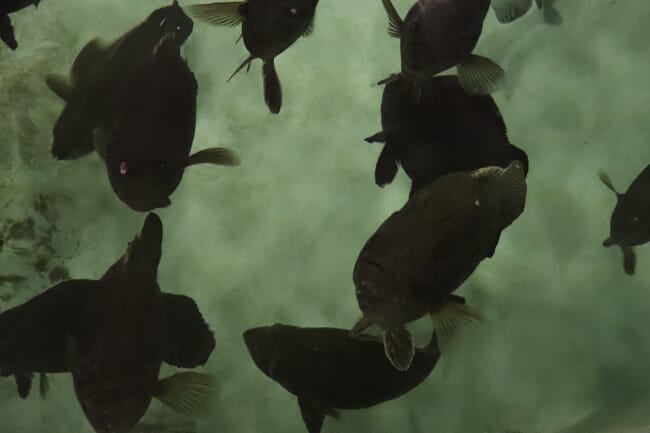
After catching 72 tripletail (Lobotes surinamensis) specimens off the coast of Mississippi, researchers were able to condition the female fish in a RAS to sexual maturity. The researchers were also able to induce spawning in male and female fish with hormonal therapies and recorded a fertilisation rate as high as 85 percent in some cases.
The study, published in the Journal of the World Aquaculture Society, outlines a crucial first step towards a capture-based aquaculture model for tripletail. It also establishes key information on the larval development and grow-out potential of the species. The researchers stress that producers must overcome reproductive bottlenecks if tripletail aquaculture is to become commercially viable. It could also, potentially, lead to fully closed-cycle, land-based production of the species.
The unknowns of tripletail aquaculture
Aquaculture producers need extensive, species-specific information before they can begin commercial farming. Catching wild fish and placing them in a tank won’t automatically lead to successful spawns or survival outside their normal environment. Producers need evidence-based information on feeding strategies, stocking densities and reproductive behaviours before they can successfully adapt wild fish to aquaculture production. Any data on tripletail would give potential farmers a huge advantage when they begin production.
Starting the cycle with wild fish

The researchers caught 72 tripletail off the coast of Southern Mississippi. The fish were sexed by ovarian biopsy for females and by blood samples in males (male tripletail cannot be manually stripped for milt). The fish were quarantined for one month to ensure they did not carry parasites like Amyloodinium ocellatum.
After the quarantine period, the fish were maintained in 28-m³ recirculation tanks (4.9m diameter, 1.5m deep). The researchers re-created the Mississippi coastal environment in terms of water salinity, temperature and photoperiods for the fish in the tanks.
Since there haven’t been many studies on tripletail nutrition, the researchers used a routine feed that was geared for marine broodstocks. The tripletail broodstock were fed a mix of fish, squid and shrimp (at a 2:1:1 ratio) three times per week. The team aimed to provide 4 percent of the tripletail’s body weight per feeding.
How producers can induce spawning
The tripletail in this trial didn’t spawn spontaneously – researchers had to rely on hormonal therapies. The team found that using gonadotropin-releasing hormone agonist (GnRHA) implants in the fish stimulated the production of sex hormones and made female fish release eggs. However, the GnRHA implants did not stimulate the same response in male fish.
The research team found that using a combination of GnRHa implants and domperidone (a common anti-nausea drug and dopamine suppressant) induced spawning in both male and female fish. Though the fertilisation rates varied between trials, the researchers recorded fertilisation rates of up to 85 percent when this combination of therapies was deployed. Despite this success, identifying the environmental factors that prevent spontaneous maturation and spawning would be beneficial for producers. Addressing this issue would also make future aquaculture ventures more feasible.
Larval rearing and grow-out
The researchers opted for a larval feeding strategy after the broodstocks spawned. The team used enriched rotifers from Inve Aquaculture 2.5 days post-hatch. The team transitioned the larvae from rotifers, to Artemia nauplii and then to dry aquafeed. The tripletail larvae were fed a conventional dry food at 25 days post-hatch until the end of the trial.

The researchers noted that the tripletail larvae performed well with rotifers as an initial prey item, but culture progress stalled when the hatchlings were introduced to Artemia. Visual observations of the rearing tanks showed low larval density. At 33 days post-hatch, the researchers recorded 30 weaned specimens – a low survival rate for the trial. As a result, they argue that more research is needed on the transition to Artemia and prepared feeds to ensure that future specimens make it past the post-larvae stage.
The grow-out phase of the trial showed strong results. After using a dry aquafeed, the researchers transitioned the remaining tripletail to the broodstock diet described earlier. From an initial post-larvae weight of 12.7g, the tripletail grew to average weights of over a kilogramme within seven months. This coincides with results of other trials that raised tripletail in tanks with low stocking densities.
Based on these results, tripletail could be one of the fastest growing warm-water species that is also suitable for aquaculture. The researchers note that the growth rates place tripletail alongside other fast-growing species like barramundi and red drum. The average yield of fillets at the end of grow-out was 33 percent.

Before aquaculture begins
Though the researchers demonstrated that it was possible to culture tripletail from wild-caught broodstock and that the species could have a short maturation cycle, multiple bottlenecks must be addressed before the species can be commercially produced.
Potential farmers would need detailed husbandry information on diseases that affect tripletail. More information is also needed on maturation and spawning in broodstock. The captive broodstock in this study did not spawn spontaneously, nor did they undergo complete gamete maturation. Though the researchers were able to induce spawning and maturation by administering dopamine antagonists, getting the species to spawn without human intervention is preferable. The researchers also noted that the industry needs to develop appropriate aquafeeds and feeding strategies for tripletail at the larval stage and during grow-out.
Producers also need extensive information on grow-out protocols and on appropriate stocking densities for commercial operations. The researchers noted that tripletail aren’t gregarious in the wild and displayed some aggressive behaviour during early phases of grow-out. This could pose both welfare and economic challenges for producers – if the fish cannot thrive at commercially viable densities, farming tripletail would be a non-starter.
Read the full review in the Journal of the World Aquaculture Society.



